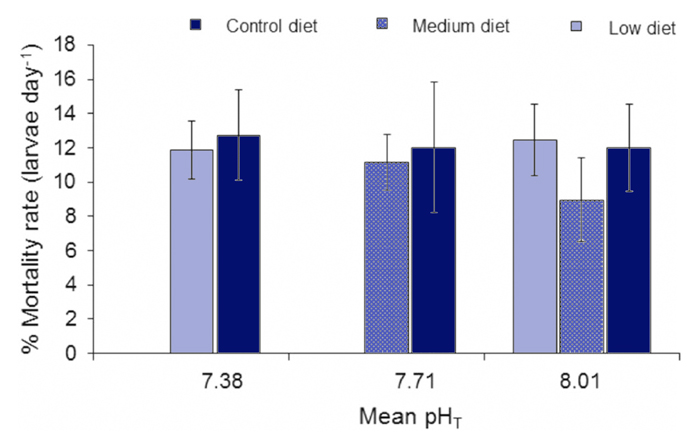| Follow @co2science |
Paper Reviewed
Maboloc, E.A. and Chan, K.Y.K. 2017. Resilience of the larval slipper limpet Crepidula onyx to direct and indirect-diet effects of ocean acidification. Scientific Reports 7: 12062, DOI:10.1038/s41598-017-12253-2.
Introducing their study, Maboloc and Chan (2017) write that "global climate change and ocean acidification are expected to alter both phytoplankton abundance and nutritional quality, however, the interactive effects of ocean acidification and diet quality are still largely unknown." Attempting to fill this data void, the pair of Hong Kong researchers examined the individual and interactive effects of ocean acidification and algal diet quality on slipper limpet (Crepidula onyx) larvae for 14 days. pH treatments included control (~8.01), medium (~7.71) and low (~7.38), while algal diet included daily feeding of Isochrysis galbana that were cultured under three pH mediums: control (9.15), medium (7.74) and low (7.39). The nutritional value of the algal diet was judged by the magnitude of the C:N ratio in each algal pH rearing treatment, where the lowest quality was associated with the lowest pH treatment (highest C:N ratio) and the highest quality with the control treatment (lowest C:N ratio).
As shown in the figure below, Maboloc and Chan discovered that neither "pH, diet, nor their interactions had [any] effect on larval mortality." Similarly, they state that "respiration rates were not significantly affected by pH treatments, diet and pH and diet interactions." A reduction in pH, however, did cause an approximate 10% decline in both shell size and larval growth rate. Larval settlement, in contrast, was enhanced by the interaction of low pH and diet.
After considering each of the various impacts observed in their study, the two scientists conclude that their work suggests "that some [marine] species, including C. onyx, exhibit plasticity to cope with ... ocean acidification and low algal nutritional value," if they are not already well adapted to it.

Figure 1. Larval mortality rate of Crepidula onyx was not affected by both pH and diet treatments. Error bars represent standard deviation (n = 6). Source: Maboloc and Chan (2017).




